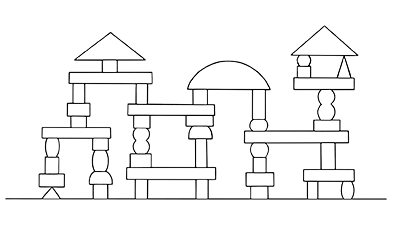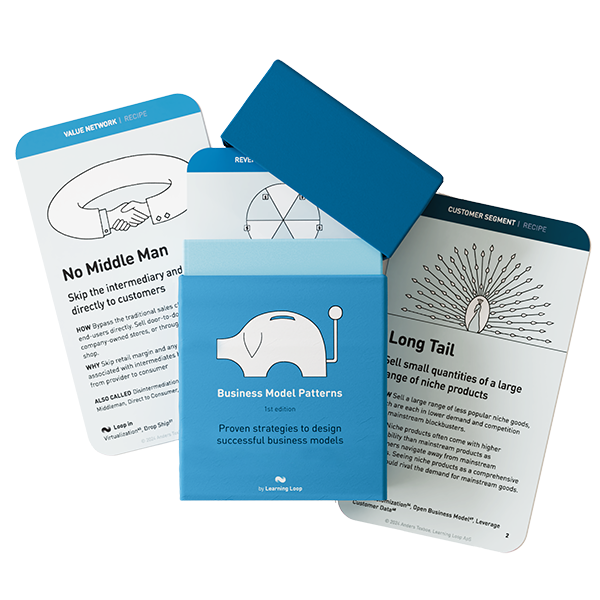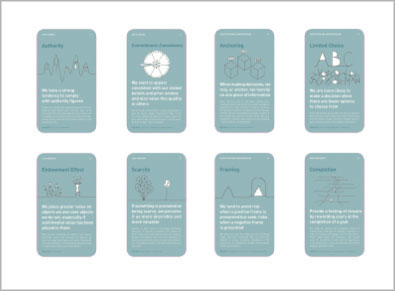Business Model Generation: Value proposition
One-stop-Shop
Sell a multitude of readily available products or services under one roof

How: Provide a convenient and efficient service to customers, which will help cross-sell between categories and boost both loyalty and revenue.
Why: Attract more customers and yield economies of scale due to a large range of offers.
The One-stop-Shop business model offers a plethora of readily available products and accessories under a single roof. This design caters to the diverse desires of customers and subsequently generates a substantial demand for the company’s offerings.
Through the implementation of the One-stop-Shop model, prices are generally kept at a competitive level to attract customers. In addition, the model leverages the economies of scope, resulting in advantages for the company in terms of efficiency and product diversification.
It is no surprise that supermarkets, an archetypical implementation nof thee One-stop-Shop model, are a popular choice among customers, as they offer the convenience of obtaining everything they desire or require under a single roof.
Where did the One-stop-Shop business model pattern originate from?
The origins of the One-stop-Shop business model can be traced back to the advent of supermarkets, which revolutionized the retail industry through their offering of a vast selection of products at affordable prices under one roof. Michael J. Cullen, the founder of King Kullen, the world’s first true supermarket, is acknowledged as the pioneer of this model.
The King Kullen Grocery Company
In 1930, the King Kullen Grocery Company opened its doors, operating under the motto of “pile it high, sell it low”, offering customers a comprehensive range of food items at low prices. This not only saved customers time and money but also provided ample opportunities for the company to market related products and offers to its price-conscious shopper base, leading to cross-promotions, discounts and more.
Evolution of the model
Cullen drew inspiration from established general stores such as Macy’s and The Great Atlantic & Pacific Tea Company (now A&P), which had begun expanding their retail spaces. He recognized the potential of the Self-Service concept and implemented it in the design of King Kullen. The supermarket enjoyed immense success and at the time of Cullen’s death in 1936, it had 17 stores. Additionally, the model leveraged the economies of scale and scope, resulting in increased efficiency.
Applying the One-stop-Shop business model
The One-stop-Shop business model can be applied in all situations where economies of scale and scope come into play. It involves leveraging these economies to increase efficiency and offer customers an extensive variety of products under one roof.
Boutique vs One-stop-Shop
While boutiques cater to a more niche market, the One-stop-Shop concept aims to provide for the needs and wants of a more diverse customer base. The two models are diametrically opposed in their approach and target market
Real life One-stop-Shop examples
Best Buy
On top of selling a large variety of electronics and appliances, its “Geek Squad” can also help fix them all.
Merrill Lynch
Pioneering financial supermarkets in the 1980s, the company gave average Americans access to an elitist investment business.
Toys R Us
A wide variety of toy products were offered at lower prices in larger stores. Founder Charles Lazarus looked to bring the success of the One-stop-Shop pattern to the toy industry, resulting in Toys R Us, the first toy supermarket. This strategy allowed Toys R Us to benefit from economies of scale and scope, providing lower prices than competitors, thus attracting customers and increasing revenue and profits. The company operates over 2,000 stores in more than 30 countries worldwide.
Trigger Questions
- Does the market feature sufficient competition to make a One-stop-Shop viable?
- How can standardization and process efficiency generate economies of scope and scale?
- In what ways must we meticulously design our back-end processes, with a focus on information technology, in order to capitalize on economies of scale and scope?
Proven business models that have driven success for global leaders across industries. Rethink how your business can create, deliver, and capture value.
Get your deck!Related plays
- Business Model Navigator by Karolin Frankenberger and Oliver Gassmann
- One-stop-Shop: Definition, Example, History, Pros and Cons by Investopedia
- What Is a Financial Supermarket? by Investopedia

